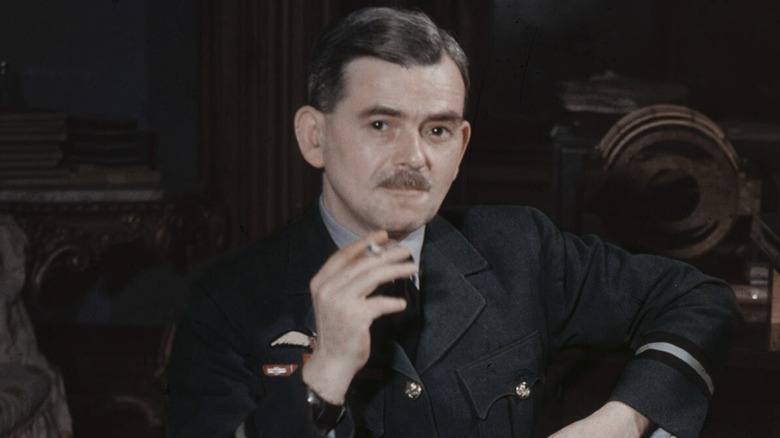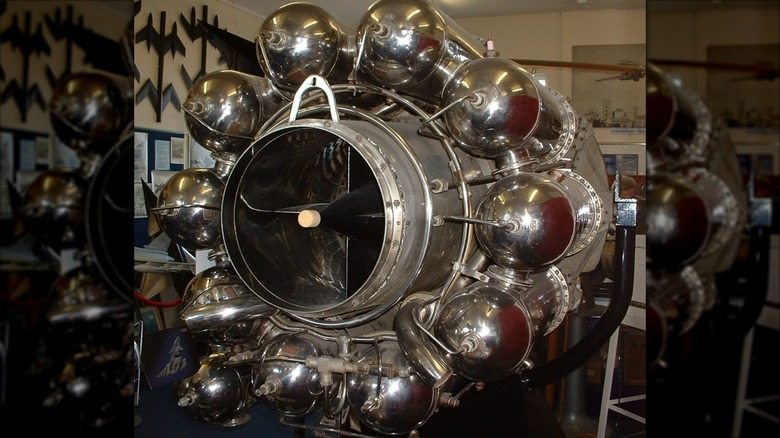Who Invented The Jet Engine?
While it's fairly common knowledge to enthusiasts that the first jet fighter was the speedy Messerschmitt Me 262, introduced in 1944, the invention of the turbine jet itself may not be as widely known. The concept existed for many years in the early 20th century, with the first patent being awarded to Maxime Guillaume in 1922, though his axial-flow turbojet was never built. It wasn't until the next decade that Frank Whittle submitted his idea for a turbojet, receiving a patent for it in 1932. Still, it would be some time before his ideas resulted in a viable jet engine.
Finally, after butting heads with the U.K. Air Ministry for a while, Whittle's design came to fruition in 1937. He established his own company to proceed with the design, and while his concept worked, he didn't install it in an aircraft. The first time that happened was when German physicist Hans von Ohain, who had come up with a similar design, tested his jet engine on an actual aircraft. This test took place on August 27, 1939, in a Heinkel He 178, launching the jet age in the process. This advancement in propulsion technology came less than a week before the invasion of Poland that kicked off WWII in Europe.
Interestingly, Spain nearly beat the U.K. and Germany to a working model. Unfortunately, in 1936, pilot and engineer Virgillio Leret Ruiz was executed by Francoist Moroccan troops in the opening days of the Spanish Civil War, leaving the victory of the first working jet engine in history to Whittle.
The U.S. was late to the jet engine game
With the British and Germans leading the way, the United States was left without a jet engine of any kind when WWII began. Frank Whittle's company, Power Jets, received a contract to produce the first production turbojet engine, which powered the Gloster E.28/39 that first flew in 1941. The Americans were impressed, so arrangements were made to ship a Whittle W.1X turbojet engine to the States, where it could be studied. General Electric won the contract and started working on its own design.
The company ultimately developed the Type 1-A, which functioned as planned. The engine underwent testing and was further developed into successive models. Once testing proved the concept, two 1-A turbojet engines were installed in a Bell XP-59A, providing the aircraft with a combined 2,500 pounds of thrust. The first test flight took place on October 1, 1942, and the United States joined the jet age. The first American pilot to fly a jet-powered aircraft was Bell test pilot Robert M. Stanley.
It took time and many modifications before the P-59 was delivered to the military for testing, but what followed was the U.S.' first production fighter jet, the Bell P-59 Airacomet. It was a landmark made possible by several people, including Maxime Guillaume, Whittle, and many others, as their incremental innovations culminated in the first jet engine in the late 1930s. The P-59 never saw combat, and the Lockheed P-80 took its place in 1944.

